OnTime Basic Content Trait Backend (New)
Read more at https://www.phpclasses.org/package/12020-PHP-Manage-a-table-of-content-without-using-SQL.html
One of the hallmarks of a top chef is his or her ability to do interesting takes on food combinations that, at first glance, seem like they wouldn’t go together at all. The first person, for example, to pair peas and wasabi together was a culinary genius.
Think about it. Someone had to test flavors repeatedly – combining and recombining in just the right increments – to arrive at that particular fusion, which I’m told is quite tasty.
To me, it sounds absolutely horrific, but that’s okay. There are plenty of people out there who love it and who will pay good money to get their hands on a food product with that flavor.
If you can connect with your clients and wake up their “taste buds,” so to speak, with new, seemingly opposing forces and combinations, you’ll be able to carve a valuable niche for yourself that will last for your entire career.

One of the most important things you can do when selecting clients to work with is to consider how they respond to your unique offerings. The bolder you are about juxtaposing unexpected elements in your designs, the more interest you will begin to generate from the types of clients you really want to attract.
Of course, this also means that you might drive away a lot of potential people who aren’t the right fit for you, and that’s perfectly okay. There’s just no way you can please every single potential client you come into contact with, and it’s not a good idea to attempt it.
Freelancers tend to have quite a bit of anxiety over letting some clients go – they need to eat, after all, and a paycheck is a paycheck, right? Well, wrong. As it turns out, everyone’s money is not exactly the same. There is some money you want to stay far, far away from. Better to let those assignments go where they will be most appreciated.
Remember how I said I thought the idea of wasabi flavored peas was horrific? I may never desire to place one of those monstrosities in my own mouth, and I’d never think of taking on a client who (for some weird reason) wanted me to endorse such a product. But it doesn’t really matter what I think. Why? Because I’m clearly not the intended market for wasabi peas.

Let’s stop and consider something for a moment. For everything you hate or find weird, nauseating, or an outright abomination against humanity, there is someone out there who loves it and who will fork over large wads of cash in order to have it.
This applies to everything from food to fashion to, of course, design. Connecting with your clients – the particular group of people who are absolutely crazy about your work – means embracing the quirks that make them, and you, unique.
In the professional pastry world, dessert making is an art that has some unique fundamental rules. You can’t just whip up a batch of chocolate chip cookies and serve them to fine diners at a fancy restaurant. True gourmands will laugh you out of business if you try it.
One of the things a pastry chef needs to include in a fine dessert is a variety of textures and flavors. Something fruity, something chocolaty, something creamy, and something crunchy – all at the same time.

Preferably even in the same bite. Desserts that don’t have a harmonious balance of different elements are usually ignored by serious foodies. That’s because top diners – people who pay lots of money for the best meals out there – are looking for dishes that excite them and get them to think about food in new and interesting ways.
Top design clients are the same way. If you produce the same old stale, conventional designs that everyone else is producing, there’s no way you can attract the attention of the people you really want to work with.
A great way to bring some “flavor” variety into your portfolio is by doing as many personal side projects as you have time for. Personal work, as you may have heard me talk about before, is the life and soul of a creative professional’s portfolio, and it can help steer your design career to new heights you never thought possible.
For an example of this in action, check out designer Irvin Lin’s tremendously popular side project, Eat the Love, a food blog that combines Lin’s passions for food, design, and photography.
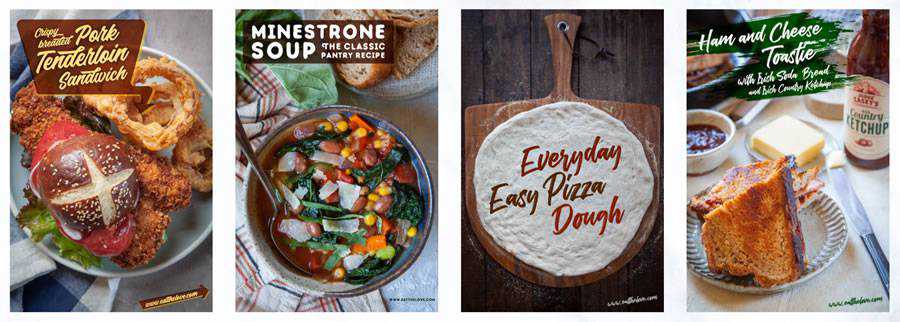
Photography & Design from Eat the Love.
You don’t have to literally add “flavor” to your personal work by starting a food blog, but the general idea is that you want to build a foundation for your freelancing career that propels you in the direction you most want to go.
Interesting new things can happen when you let inspiration fuel creativity. A distressing number of designers I know don’t make use of the best ideas they get from their inspiration research. They believe there’s no “practical” use for something that’s too out there.
But putting a relevant spin on seemingly irrelevant ideas is what design is all about. When I was in culinary school, we would get yelled at by our chef instructors when they felt we weren’t being creative enough with our flavor combinations – loudly, and usually in a French accent. I actually think more designers should consider taking a cooking class or two.
If nothing else, it will help you appreciate the next belligerent client you come across, because take it from me: there is nothing more terrifying than a French chef throwing a full-on temper tantrum. Remember that guy in Ratatouille? Yep, he exists.
Nowadays, there are websites devoted to helping home cooks generate ideal food pairings to give their meals a bit more sophistication, but most cooks I know had this concept beaten into their heads the old-fashioned way.
We tasted everything, altered the flavor somehow, and tasted it again, rinsing and repeating until we could run off three dozen different cheeses, vegetables, and wines that went well with an aged boudin sausage.
In my opinion, this is still the best way to go about becoming a food-pairing master. In the same way, you need to “taste” all of the things that inspire you as a designer. You can only find out the limits of what’s possible if you test every different solution you can think of.
Maybe you’re not sure whether a hand-illustrated typeface is the best way to go for your new responsive interface. Or maybe you’re not sure which one you should use. These are the types of things that can only be discovered by doing them many, many times. Good luck!
The post Waking Up the Taste Buds of Your Design Clients appeared first on Speckyboy Design Magazine.
Google’s influence over web designers, website owners, and everyday users is undeniable. The company is hyper-aggressive in detailing what it wants to see from the first two groups in order to serve up relevant results to the third.
One of their more recent efforts in this area revolves around something called “Core Web Vitals”. These metrics are in place to measure user experience. Items such as how quickly a page can be interacted with, it’s responsiveness, and how much visual shift during loading are measured.
Keeping tabs on these factors sure seems like a worthy endeavor. However, it’s not just for convenience. Google is planning to integrate visual indicators of page experience into search results in May 2021. The move has the potential to affect both SEO and how a website is listed on the search engine results page (SERP).
This means websites that don’t meet Google’s benchmarks could see a negative impact on their ranking. There’s also a possible hit with regards to how it displays within results. With that, site performance is going to be more important than ever.
It’s not only a call for web designers to bleed every last millisecond of speed out of their sites. This is also an open question about what Core Web Vitals means to sites on a tight budget or even those running a content management system (CMS): Is Google asking too much?
There are a lot of tools out there to measure website performance. Each has their own methodology for generating a report. There will likely be some variance in how the included categories grade out. Thus, they should all be taken with a grain of salt.
That being said, Google’s PageSpeed Insights tool seems to grade on the lower end of the scale. For example, a test website that gets a glowing result on GTmetrix is much less flattering on Google’s offering. The site doesn’t pass the Core Web Vitals standards for mobile.
The point here is not necessarily to complain (although this is quite a bummer). It’s more of a friendly heads-up to web designers: Just because your website looks great in a non-Google testing suite doesn’t mean it will do well in these particular metrics.
Not surprisingly, Google wants you to use their tools to determine how well your site does with Core Web Vitals. As such, all of that tweaking you did to get a great performance grade elsewhere may not impress this particular search giant.

Top: A test site grades well in GTmetrix, while the same site struggles in PageSpeed Insights (bottom).
If your website doesn’t pass muster when it comes to Google’s Core Web Vitals, some work will be required. First, there’s analyzing the PageSpeed Insights report and determining what needs done. Then it’s time for implementation.
But both budgetary and technological concerns could get in the way for some website owners. Let’s look at a few situations where Core Web Vitals may become extra burdensome:
Improving website performance costs time and money. Of course, if it helps with SEO, then it might be considered an investment. But it still may be out of reach for those on a tight budget.
When you think about it, there are multiple facets to better performance that need to be explored. That could include refactoring code, optimizing images and eliminating features that are dragging the whole site downward.
The costs for this type of work could easily add up. For an older or particularly slow site, it might end up being more cost-effective to start from scratch with a redesign.
Web hosting is also a potentially huge factor. Those on a lower-end shared hosting account may simply not have enough server resources. Once again, more robust hosting requires more cash.
A traditional CMS (WordPress, Drupal, etc.) that utilizes a database makes for a more complex case. The overhead from executing queries and other key functionality is generally going to slow down a website.
This is where features such as caching can help. But cache alone may not be enough to satisfy the likes of Google. It may take the use of a content delivery network (CDN) and higher-level web hosting to get things to an acceptable level of performance.
Even then, a bloated theme or plugin could also provide a setback. The WordPress commercial theme market, for example, is chock full of heavy options. Themes that need to load large frameworks and lots of custom code can be beyond the reach of developers.
In these situations, the only way to add enough speed may be switching themes, deactivating plugins or (possibly the most expensive of all) utilizing a headless configuration. These may not be realistic options for every website. At best, these measures are also an inconvenience.
Likewise, using a proprietary CMS (Squarespace, Wix, etc.) may leave website owners without a viable path to fixing each and every performance deficiency. While they may allow you to tweak certain bits and pieces of your website, other areas may be completely off limits.
As for server infrastructure, there’s not much to be done there, either. Perhaps an account level upgrade could provide more resources – but that’s up to the vendor to decide.
In general, website owners and developers could be left hoping that their service provider addresses these issues. Anything less will require living with the shortcomings or moving to a different platform.
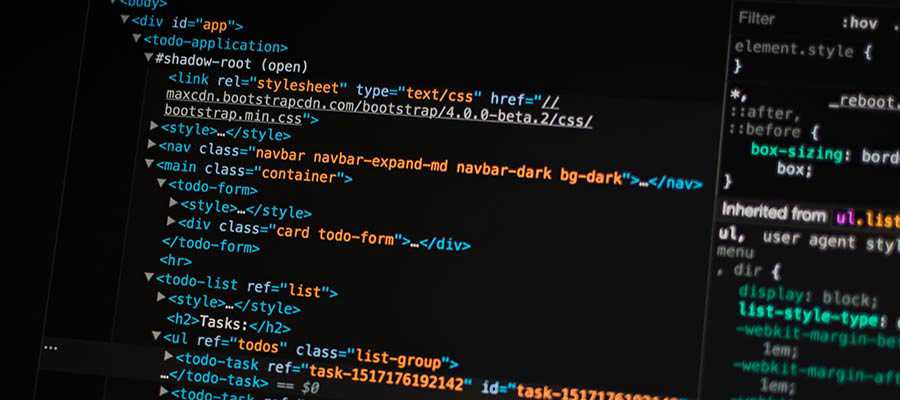
It’s fair to wonder if Google Core Web Vitals inevitably favors those with the most resources. Could a small-budget website with tons of great content be overshadowed by one that simply has more money to throw at performance?
At this point, we simply don’t know how Google would weigh one website against another when these metrics are included. And they aren’t likely to provide all of the details.
In some ways this is all reminiscent of the arguments over net neutrality. The fear being that, if an internet provider gives preference to certain types of traffic over others, it’s going to favor the well-heeled. Small startups could be at a major disadvantage and unable to compete with the big players.
Google may have no intention of favoring speed over quality. But, at the very least, Core Web Vitals seems to be raising the possibility.

It seems like every time we think we know what search engines want, they go and change the game on us. Regardless, the bottom line is that Google Core Web Vitals is going to impact every website that aims to be found in search engines. Naturally, some are going to avoid any potential negative effects better than others.
Great website performance should be on the top of everyone’s wish list – no argument there. But to earn a passing grade on these new metrics, it’s going to take resources. And that will sadly leave some people behind.
In this way, Core Web Vitals could indeed be asking too much. That leads one to wonder if a search engine should be able set such arbitrary requirements in the first place.
The post Are Google’s Core Web Vitals Metrics Unreasonable? appeared first on Speckyboy Design Magazine.
When you’re looking to put together a new flyer to announce a new fashion line or style event, it’s vital that you do so in a visually compelling way. If you lack graphic design skills, this can be quite a challenge. That’s why templates were invented, right?
If you’re stumped as to where to look for style and fashion flyer templates, we’ve got your back. We’ve put in the legwork to research this collection of templates. And you want to know the best part? They’re all free! Happy designing!
You might also like: Free Business Flyer Templates, Free Fitness Flyer Templates, Free Music Event Flyer Templates, Free Party Flyer Templates, Free Real Estate Flyer Templates, Free Restaurant & Food Flyer Templates, Free Travel Flyer Templates.
This fashion flyer features a minimal style that is as eye-catching as it is simple. This PSD file is fully editable, so you can add your own photos, graphics, and text with ease.

The Fashion Flyer Template is a print-ready template you can use to create a flyer for your next fashion week, brand launch, or store event. Add custom images and use the free included font if you wish. This PSD file is also easy to edit thanks to well-organized layers. Plus, it’s versatile and could be used in other industries besides fashion if you wish.

This fashion template is perfect for creating sale flyers. Use it to announce an online or in-store sale at your clothing store. Or, you can customize it to use in other ways as well. This flyer template is sized as a full-sized regular page, is print-ready at 300dpi in CMYK, and includes free fonts.
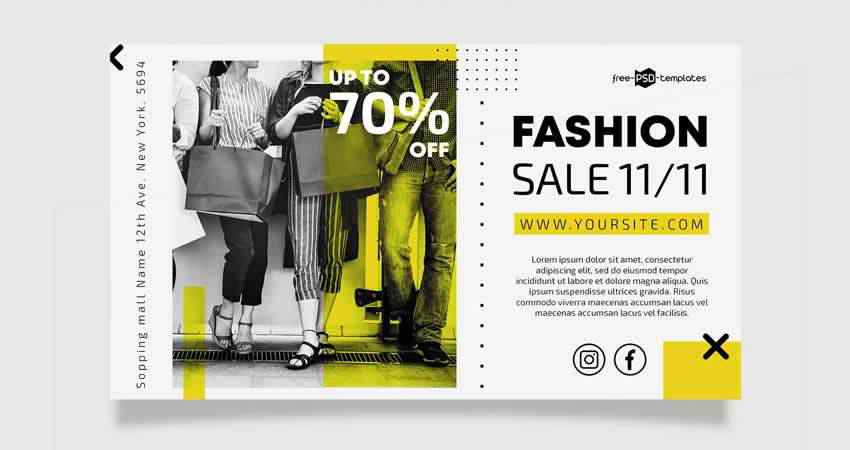
This Fashion Event Flyer template is stylish to the max, with interesting background graphics, framing, and font choices to make your chosen images pop and to convey your announcement so it makes an impact. The file is in PSD format, is fully editable and printable, and can be customized to suit any event style.
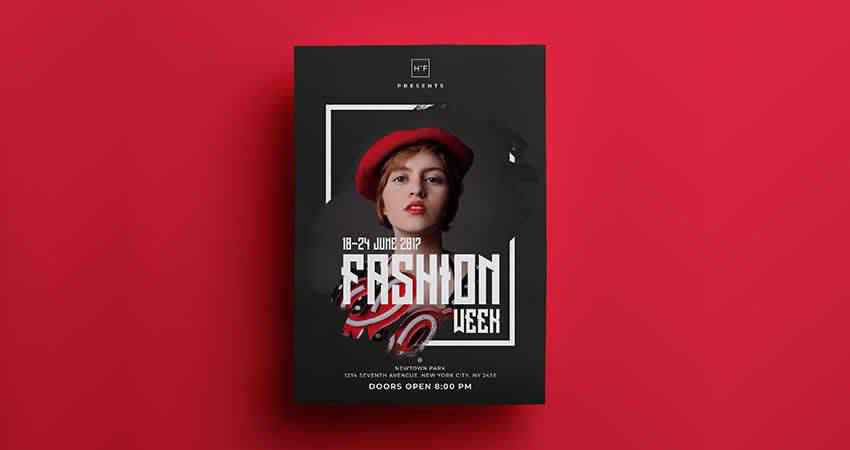
Announce your next fashion event with true style. This Fashion Week Show Flyer template is bound to make an impression with its color splash background and show dates highlighted with colorful circle designs. Edit the file in Photoshop then print it out. Easy as that.

Another flyer template you’ll definitely want to check out is the Fashion Collection Vector Flyer Template. It’s editable in Illustrator and features bright and bold colors that catch the eye. Use it for both printed and online flyers to announce a fashion event or store sale.

The Minimal Fashion Event Flyer template is fully editable in Photoshop so you can customize it to promote your next fashion week or other style-related event. This template uses free fonts, you can swap out the images with your own easily, and it offers an edgy style that might be most suitable for streetwear brands.
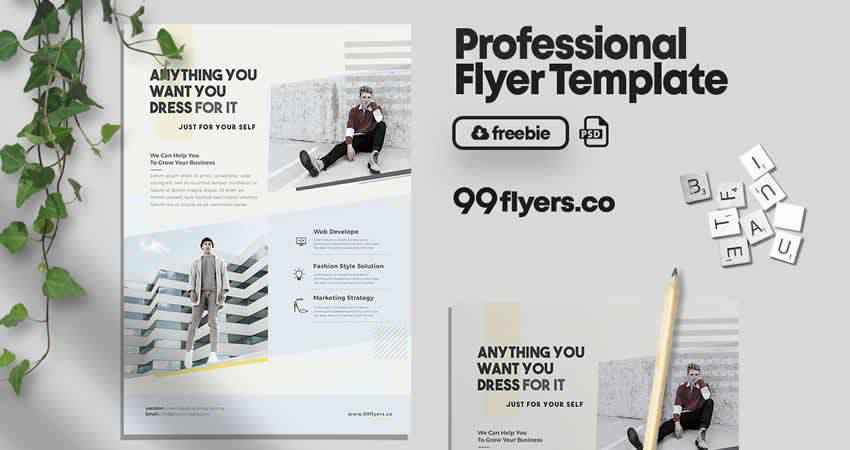
The Fashion Collection flyer template makes a bold statement right upon first glance. It’s designed to feature your chosen photo prominently and offsets it with a thick, colorful border. and bold text boxes. This PSD file is fully scalable and printable as well.
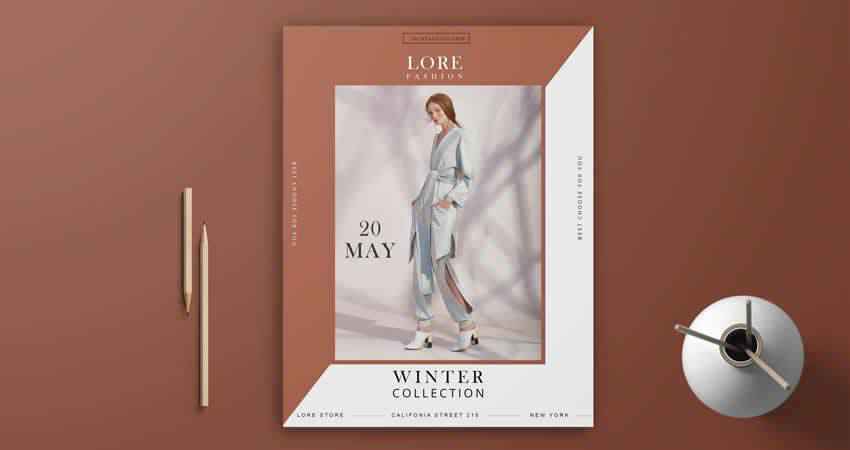
The Fashion Week Flyer template offers an elegant take on the fashion flyer motif. It features a black and white design with geometric, almost constellation-like designs in the background. Highlight your own images plus textual information in this easy-to-edit PSD file.
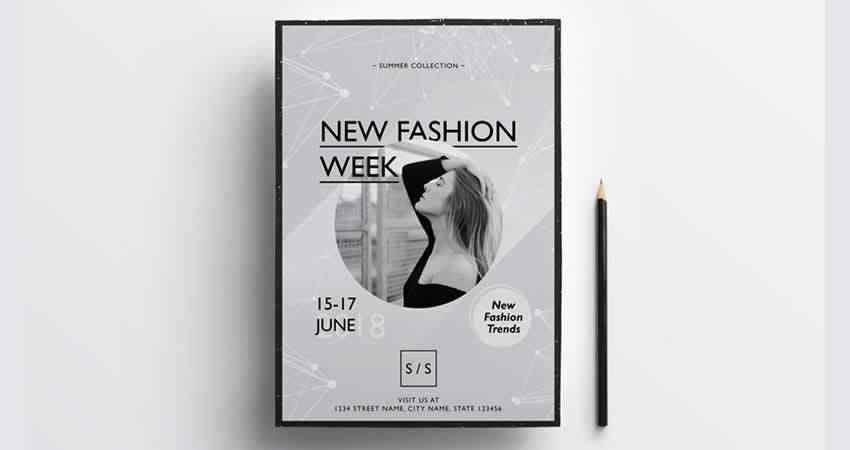
This fashion flyer template allows you to showcase one chosen image plus sale prices, dates, company info, and anything else you might want to feature. This template is customizable in Photoshop and printable in CMYK and 300dpi. It includes a help file to guide your usage of the template as well.
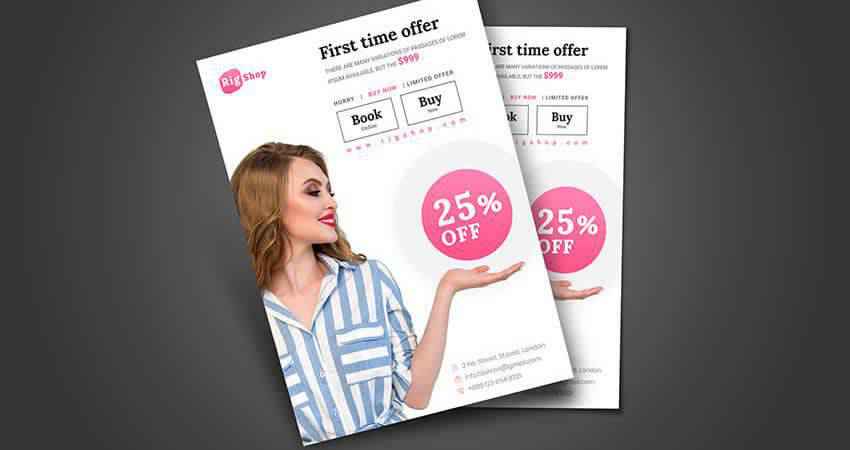
If sophistication is what you’re looking for, the Professional Fashion Flyer template is a bold choice. With it, you can showcase multiple photos and call out key information with large text boxes and graphically appealing designs that pull your eye to the most important tidbits.

This template is a great choice for a fashion boutique. It’s in vector format, so you will need Illustrator to edit it. The sample flyer uses a lovely blush pink shade as the background color and call out headers in a dark gray. You can customize these colors, of course, but the sample gives you a good idea of how this template can be used.
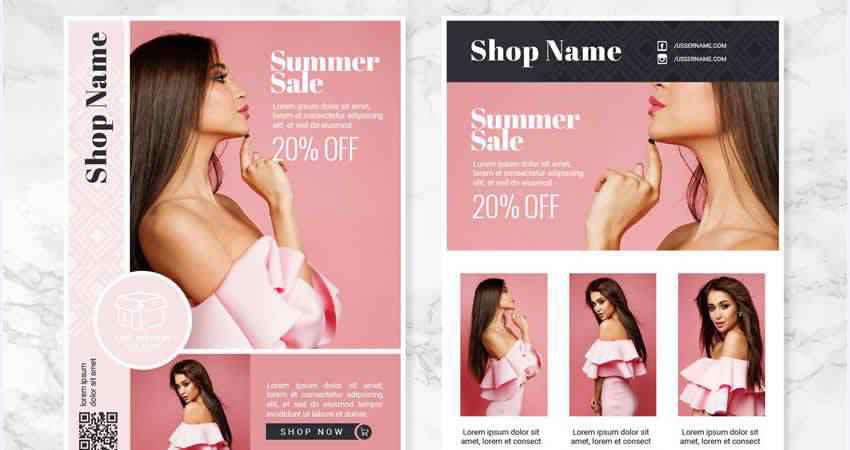
Now this fashion flyer templates is quite minimal but it avoids looking bleak by giving ample space for you to insert a custom image of your choice. Include a few headers and text and you’ll be able to whip up a printable flyer in Photoshop in a matter of minutes.

This template is another sophisticated choice that just exudes elegance. Feature your best image right in the center and offset it with the half-tone background, interesting typographical choices, and practical information. This template is editable in Photoshop and is fully scalable and printable.
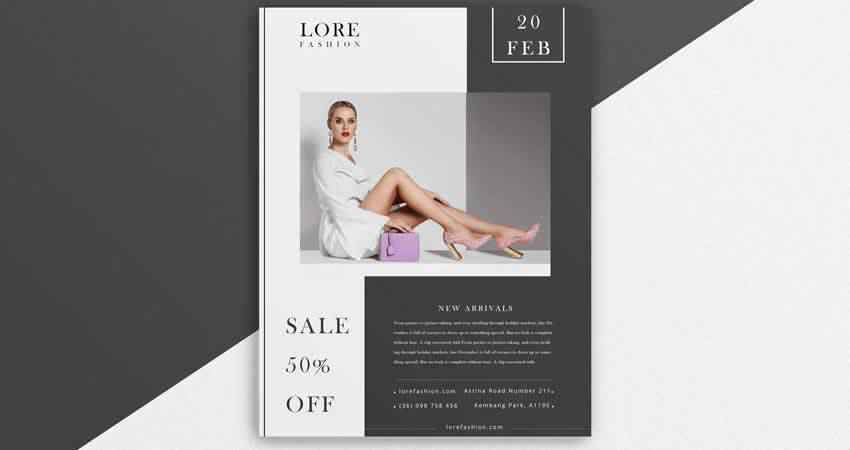
The Modern Fashion Sale Flyer just screams summer to me. It allows you to feature a bold fashion image front and center and accentuate with with large color blocks and background layers that draw the eye. This EPS file is editable in Illustrator and will give your next fashion campaign or sale the push it needs.

The Barber Flyer Template exudes style and class. Though you don’t have to use it for a barber shop, the example imagery paints a compelling picture: this would be the perfect template to showcase menswear. This PSD file is fully editable, well-layered, and printable at a high resolution.

The Vector Fashion Flyers template is a bit more chic and understated, but that can be a good thing. This flyer template is editable and printable in AI, EPS, and SVG formats. I could easily image this template being used to promote a clothing store sale online or at a brick and mortar shop.
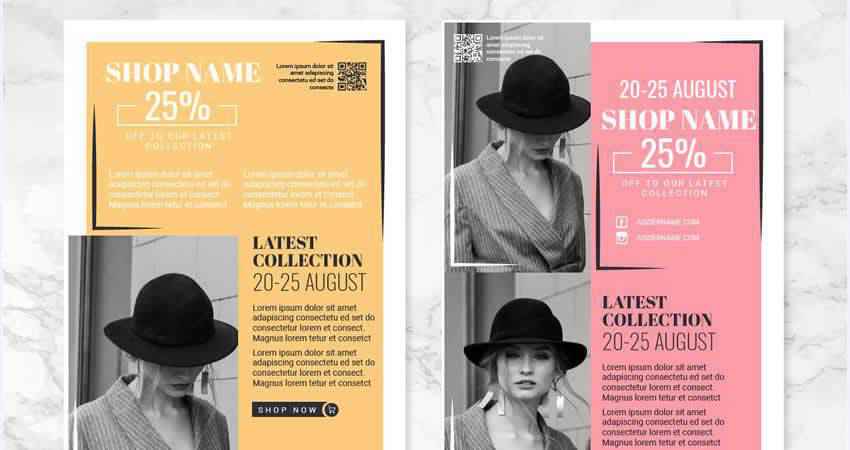
At least one of these style or fashion flyer templates is bound to suit your needs. The end result is certain to be stunning and will work well to attract attention for your business, your brand, or your style event.
The post 12 Best Free Style & Fashion Flyer Templates appeared first on Speckyboy Design Magazine.
BigCommerce is one of the most popular platforms for creating ecommerce websites. It offers features that make building an ecommerce site more user-friendly while maintaining the flexibility that more advanced users want.
How does BigCommerce design work, and how can you create a successful ecommerce site using the platform? Keep reading to learn about the BigCommerce website builder and get our top ecommerce design tips.
Want more web design and digital marketing tips delivered to your inbox? Join 150,000 marketers in signing up for one of our email newsletters.
We don't just want to tell you about the beautiful work we do. We've built over
WE WANT TO SHOW YOU
Websites in industries like yours
BigCommerce has several features that make building a website much easier, even if you don’t have any experience with web design or code. There are also options more advanced users can use to achieve more customization.
Here’s an overview of how you can create an ecommerce website with the BigCommerce website builder.
There are lots of themes available for BigCommerce that give you an excellent starting point for your site. You can choose a free or premium theme and then customize it according to your needs. BigCommerce offers numerous themes in its Theme Marketplace, and you can also find third-party BigCommerce themes.
Page Builder is BigCommerce’s visual editor, which allows you to adjust your site’s layout and make simple customizations without using code.
All the themes available through BigCommerce are compatible with Page Builder.
With Page Builder, you can add, remove, and rearrange elements on your pages and adjust style elements such as colors and text sizes.
BigCommerce also offers a way to make more advanced edits within your browser. This option, called Edit Theme Files, is available for BigCommerce Stencil themes. It’s recommended that you use this option to:
Using Edit Theme Files requires knowledge of HTML, CSS, and Handlebars.js. If you’re not comfortable with these languages, you may need to work with an ecommerce website developer.
BigCommerce’s Stencil Command-Line Interface (CLI) is a tool that developers can use to make larger changes to a theme without impacting the live website.
It provides a controlled environment for customizing your BigCommerce themes and testing your changes. Stencil CLI is perfect for making more extensive and advanced changes to your theme but requires web development knowledge.
Campaigns managed by WebFX have earned overPartner with Ecommerce masters!
TRANSACTIONS IN THE LAST 5 YEARS
About 75% of visitors use a website’s design to judge its credibility. Appearing credible and professional is crucial for ecommerce businesses since users won’t give their payment information to a website they don’t trust.
So, your website’s design is essential to getting users to spend time on your site and convert.
Check out these BigCommerce design tips below to learn how to create a winning ecommerce website with BigCommerce.
The best ecommerce website designs tend to be simple and polished. Avoid over-stuffing your pages with content and use white space to separate elements.
Aim to make your pages scannable. Visitors should be able to determine what your page is about by quickly glancing at it.
Keeping your design simple and uncluttered will make your site easier to look at and navigate.
In this example from Clarks, you can see how the design includes a central image and an abundance of white space around it to keep the design looking clean and uncluttered.
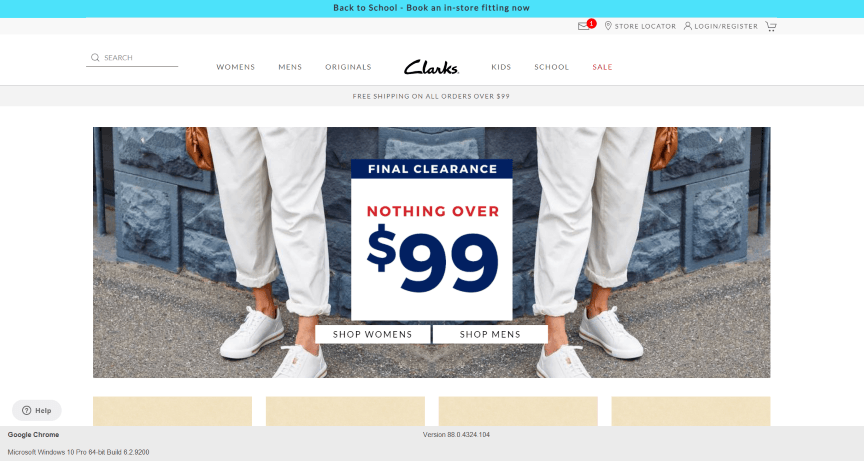
As many as 90% of users have made a purchase on their smartphone, so ensuring your site looks good on mobile devices is essential. The best way to accomplish this task is with responsive design.
Responsive design enables your website to adjust to the device someone visits it on, so it looks professional and works correctly on all devices, including laptops, smartphones, and tablets.
Whichever theme you choose for your BigCommerce website, make sure it’s responsive. Today, there are plenty of responsive options available. If you customize your theme or build a custom theme, make sure you prioritize responsive design.
Use a consistent design across your website that matches your brand and includes important brand elements. A consistent, branded design will make your site look professional and help users feel confident they’re in the right place no matter where they are on your site.
Brand elements to use in your design include:
Your overall design should also match your brand’s personality. For example, if your brand is high-class and elegant, you’ll want a sophisticated, simple look. If your brand is fun and casual, you might use bright colors and eye-catching, lively images.
For an example of incorporating branding into your design, look at how Sierra Designs uses the color from its logo in its free shipping offer and its new product label.
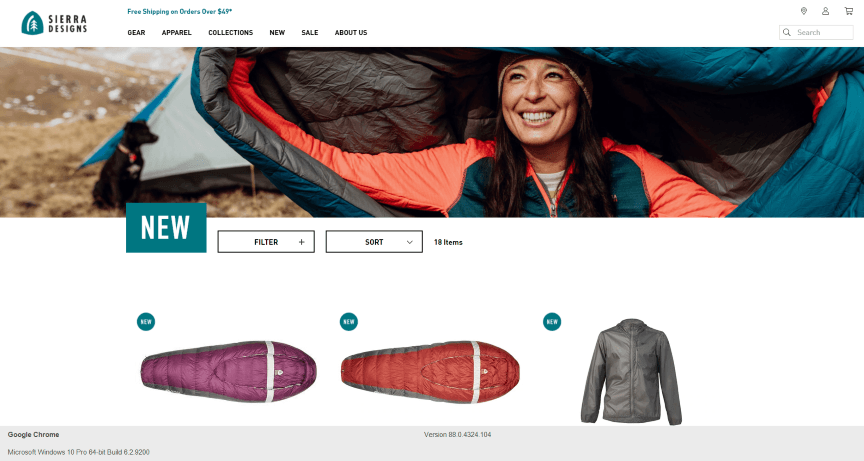
Adding images, graphics, and videos to your pages is an excellent way to make your pages more eye-catching and engaging. In fact, users spend 88% more time on pages that have videos.
Visuals are especially important when it comes to product pages. Include multiple photos of your product so shoppers can see it from various angles. Videos are great for showing your product in action.
Make sure the videos you add to your pages are high-quality, so they make your site look more professional and visually appealing. Opt for original images and videos whenever you can. Also, ensure the visuals you choose fit with your brand aesthetic.
Almost 90% of consumers will shop with a competitor if they have a negative user experience. Your website’s design, especially your navigation, plays a central role in your visitors’ user experience.
Your navigation is how users get around your site, and if they can’t do so easily, they’ll likely end up frustrated and leave without making a purchase.
Create broad menu categories that are easy to see from anywhere on the site and organize various subcategories under these items. This setup helps users to quickly navigate to the types of products they need.
On Awesome GTI’s website, for example, visitors can shop for auto parts by car from the top navigation menu.
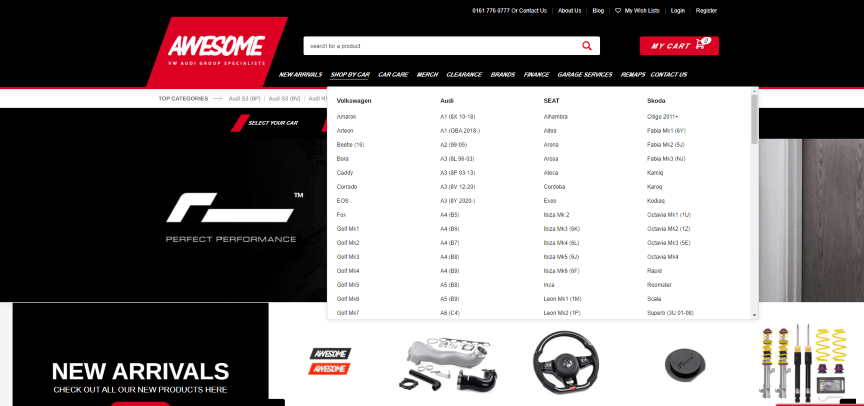
Search bars are also hugely important on ecommerce sites. For shoppers who know exactly what they want, the search function saves a lot of time. Make your search bar easily visible in your top menu.
Easy and quick navigation is critical during the checkout process. Include as few steps as possible in your checkout process and make sure it’s clear to users what they need to do to complete their purchase.
Don’t stop improving your website’s look and functionality once you’ve created your initial design! Instead, use A/B testing to determine what works best for your site and continuously refine your site.
A/B testing involves testing two different versions of a page to see which performs best. For example, you might create two headlines and see which one keeps users on the page longer. You could also design two calls to action (CTAs) to see which version gets more clicks.
By continuously testing and refining your designs, you can substantially improve your site’s performance over time.
Whether you’re using BigCommerce, opting for another ecommerce platform, or building a custom website, partnering with a professional ecommerce website design and development firm can help you make the most of your project.
The award-winning web design team at WebFX has created more than 1100 websites for our clients, and we’ve generated over $2.4 billion in revenue for our clients over the last five years.
To learn more about BigCommerce design and our other ecommerce services, contact us online or call us at 888-601-5359.
The post 6 BigCommerce Design Tips For Big Ecommerce Results appeared first on WebFX Blog.